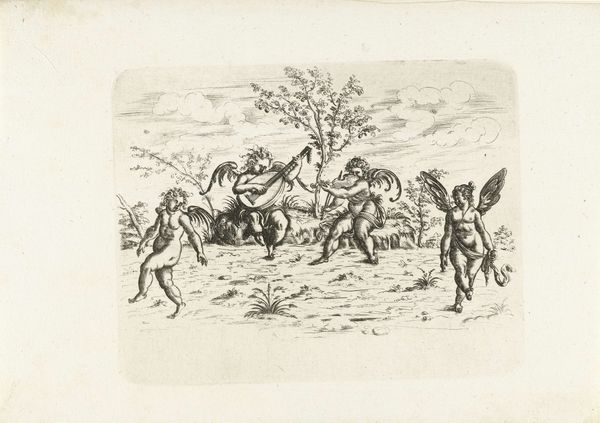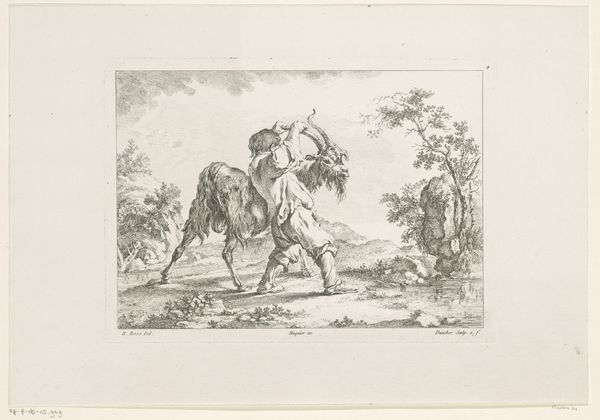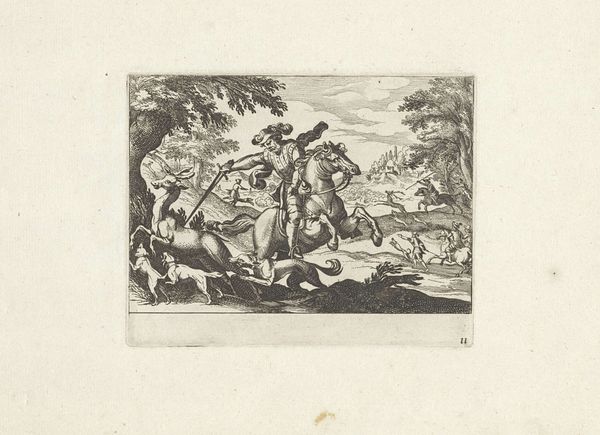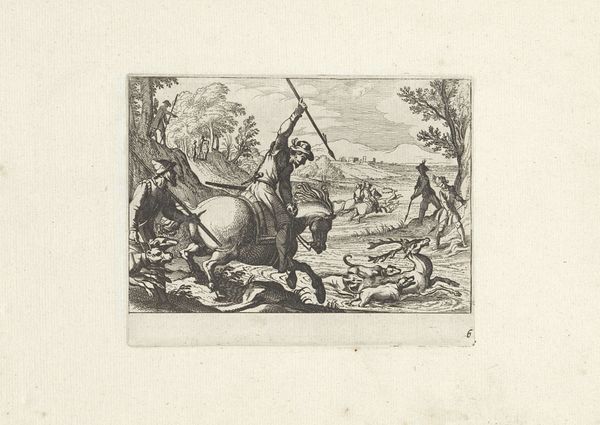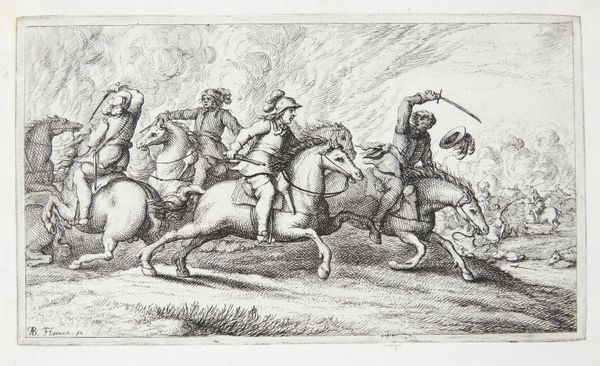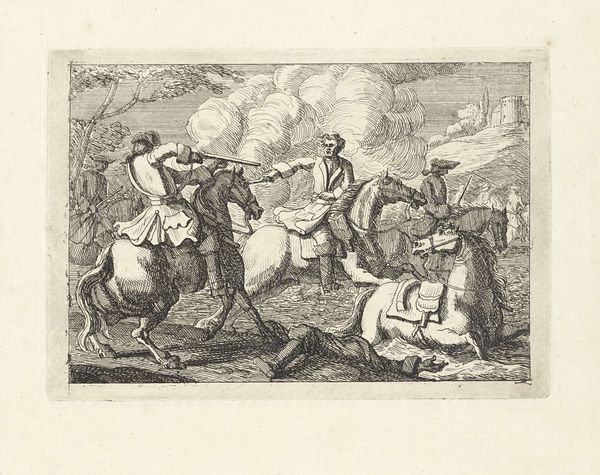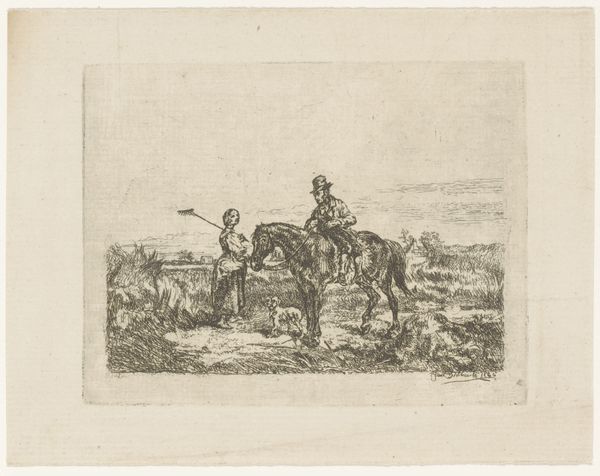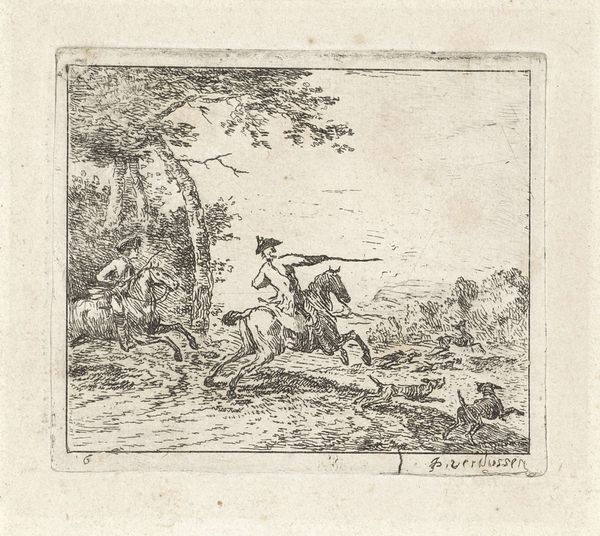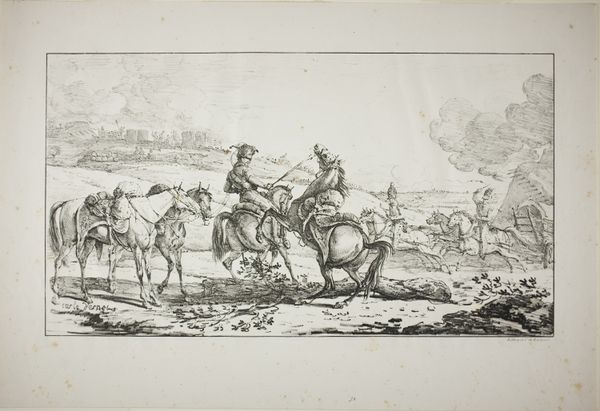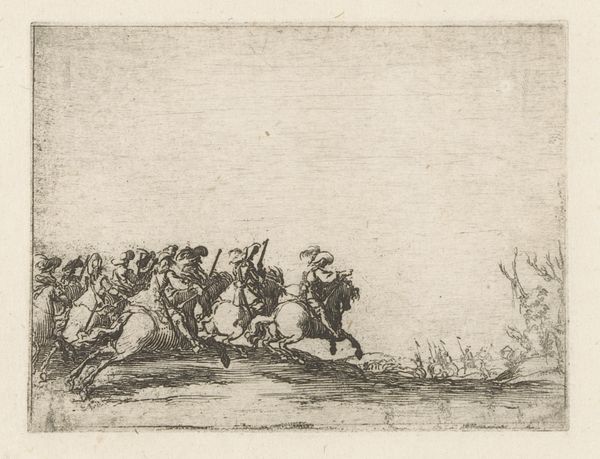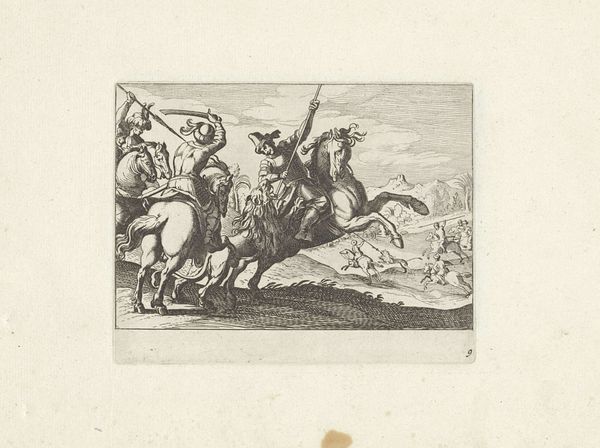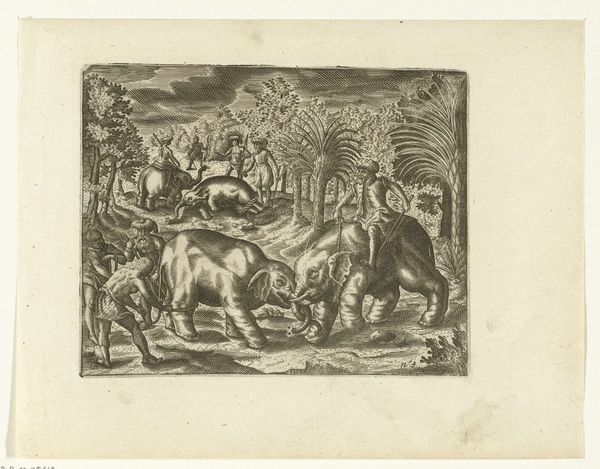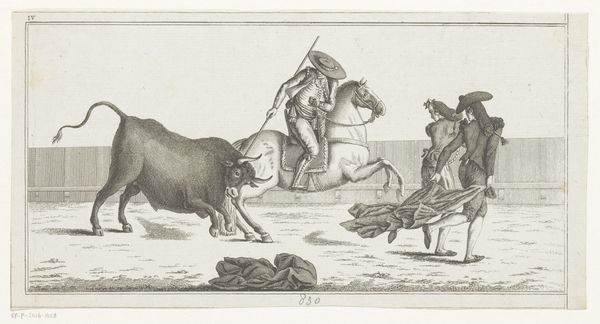
drawing, ink, pen, engraving
#
drawing
#
ink drawing
#
pen drawing
#
pen sketch
#
mannerism
#
ink
#
pen
#
genre-painting
#
history-painting
#
engraving
Dimensions: height 147 mm, width 188 mm
Copyright: Rijks Museum: Open Domain
Editor: Here we have Christoph Jamnitzer's "Landschap met een ruitergevecht tussen twee putti," an ink and pen drawing made sometime between 1573 and 1610. It depicts a rather dynamic, albeit diminutive, clash of two mounted figures in an open landscape. What can you tell me about this piece? Curator: It's fascinating how Jamnitzer uses the genre of battle to potentially reflect the social tensions of his time. The Mannerist style, with its distortions and exaggerations, becomes a powerful tool. Are these "putti," cherubic figures, truly innocent, or do they represent a critique of power, perhaps of the ruling elite disguised as playful children? Editor: That's a really interesting angle. I'd initially assumed they were just decorative. Curator: Consider the history surrounding this artwork. The late 16th and early 17th centuries were a time of religious conflict and social upheaval. The image is reminiscent of military parades thrown by the elite. Do you notice how their small size juxtaposed against the trappings of war becomes almost satirical? It invites a dismantling of traditional power structures, doesn’t it? Editor: It does now that you mention it! Their posturing now comes off more performative, almost as if they're playing at being powerful. Curator: Exactly! And the landscape itself is worth considering. It provides no solace or escape from the battle, further emphasizing the pervasiveness of conflict and societal power struggles. In effect, how does this visual narrative contribute to discourse about agency during the Mannerist era? Editor: Wow, I see so much more in this than I did at first glance. The composition isn't just an aesthetic choice but a commentary on the era itself. Thanks for offering your unique lens. Curator: It’s a testament to art's capacity to mirror and challenge our social constructs! Examining through the lens of gender, power, and identity helps create layers to this otherwise simple historical depiction.
Comments
No comments
Be the first to comment and join the conversation on the ultimate creative platform.
